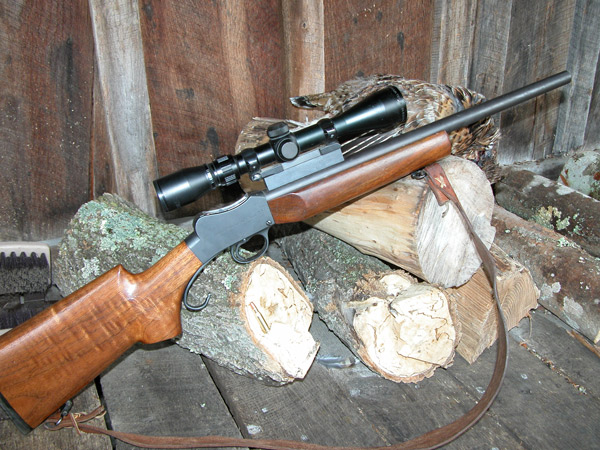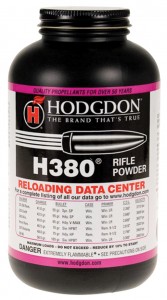
Reloading .22-caliber centerfire cartridges requires precision, but the attention to detail pays off in the field. Accurately loaded rounds can make your next varmint hunt — whether squirrel, woodchuck or coyote — a blast.
The term varmint cartridge to me has always meant those centerfire rounds of the .22-inch diameter. Starting with the Hornet and going up in power, the .223/.224 diameter can be the perfect match of power and accuracy for putting a four-legged pest in its place.
I have generally started my .22 centerfire loading with a 50-grain bullet (the Hornet and Bee the exceptions). In some calibers a bullet weight change of only 2 or 3 grains can be the difference between dime- and quarter-sized groups. The key to the varmint cartridge is matching the bullet weight to the velocity. When the target is only a couple of inches wide, it’s important to pay attention to the little things as they can make a big difference.
For our purposes, we will divide .22 centerfire rounds into two categories on either side of the 3,200 fps barrier. Those under this figure, and this is not meant to be an all-inclusive list, such as the Hornet, the .222 and .223, the Bee and the variations on this case volume, can be delightful performers with negligible recoil and little report.
The Hornet can be somewhat fussy in my experience. There may be only a very narrow window of load/bullet weight that will perform in a certain rifle, but if that load and bullet are found this caliber can quickly become a shooter's favorite.
Light Loads
In one particular Winchester Model 43 I had just about given up until I hit upon the 40-grain Speer and 12.5 grains of Lil' Gun powder, a last-ditch attempt to get decent groups. I was not disappointed, and the chronograph showed an average velocity of 2,770 fps for 10 shots. No other load would shoot within an inch at 100 yards in this gun.
I have always been a .218 Bee fan and believe this little cartridge should be much more popular than it is today. For squirrel, head shots late in the season when the range can be long, a properly scoped Bee is unbeatable. For the lever guns, of course, the flat-point bullet is the choice and there is none better than the old Hornady 40-grain Jet if your gun will shoot them, but the Bee has the best performance in the single-shot or bolt-action rifle.
I seriously considered barreling my low-wall for the Bee before I settled on the .38/.357 and to this day still have a pang of regret over the decision. In the Martini I owned I used the 46-grain Speer jacketed flat point and a case packed with 15 grains of IMR 4198 for 2,700 fps, a maximum and compressed load. My two best shots with it took a fox squirrel and a grouse, back to back, within about 15 seconds of each other, the grouse at 50 yards and the squirrel at nearly 100. It’s a great cartridge.
When working with the lightweight loads necessary for the under-3,200 fps crowd, make sure your powder scale is right on the money. We're talking about adjustments of tenths of a grain and yes, tenths can make a big difference in pressure and accuracy in little cases. Go slow, test your loads and watch for signs of pressure, always good advice but especially with the little guys.
Of the .222 and .223, there are no other calibers that are easier to load. Truly, if you are a rifle shooter, you need one of these in your collection, and it doesn't matter which one, both are delightful.
Hotter Rounds
For the hot .22 centerfire rounds, the standard has been the .22-250 since it was in wildcat form. All other .22 centerfire calibers today are judged against it. This statement may cause some raised eyebrows among the Swift followers, but the truth is the 250 buried the Swift when it was introduced in factory form. The Swift is a marvelous performance round but velocity isn't everything.
In an ugly and cheap 788 Remington chambered for .22-250, I worked up to the maximum load of 34 grains of BL-C(2) under the 52-grain Hornady for 3,700 fps that delivered groundhog-eyeball-sized groups, yet from a load so mild in pressure I thought I was shooting a .222.
In the Swift I was shooting at the time, a tang-safety Ruger 77, the only groups under an inch I could get were much hotter with this bullet weight. When I switched to the heavier 60-grain Hornady, the Swift delivered groups under one inch only at .22-250 velocity. In my limited experience, I'll stick with the 250.
Many years ago a friend introduced me to the .219 Donaldson Wasp, a cartridge he had chambered into a custom barrel for his Ruger No. 1 single shot. He formed his cases from .30-30 brass and loaded 50-grain Hornady soft points over 27 grains of IMR 3031 powder.
Over an ancient Ohler chronograph that load turned up 3,500 fps, and I saw this fellow kill countless groundhogs out to 400 yards with it. He said he had read about the cartridge in one of his father's magazines when he was a kid and had always wanted one; the delight on his face when he was shooting it is something I will always remember. He did not care a bit that the Swift was faster or the 250 easier to load, he kept the enjoyment of shooting as his first priority. Regardless of your choice in the varmint cartridge field, that might be something to keep in mind.
Top Powder Choices

For .22 centerfire cartridges try these powders. For the small cases like the Hornet and the Bee, try H4198 and Lil' Gun, both worth the money for experimentation. IMR 4198 is good also, albeit a bit dirty.
For the .222 and .223, H322 or H335 are the gold standards. I have had good luck with BL-C(2) and the 50-grain bullet in the .223.
For the .22-250, H380 is a great place to start. The old Hodgdon load of 38 grains of H380 and the 52-grain Hornaday hollow point should be printed on every .22-250 rifle sold. The most accurate Swift rifle I ever saw was digesting H380 and 50-grain Hornady bullets. Do not overlook Varget in either caliber.
As with all load data, work up carefully and never exceed maximum loads. Pay attention to tenths of grains with these cartridges; little changes can mean big differences in group size.
This article originally appeared in the March 25, 2013 edition of Gun Digest the Magazine.

Next Step: Get your FREE Printable Target Pack
Enhance your shooting precision with our 62 MOA Targets, perfect for rifles and handguns. Crafted in collaboration with Storm Tactical for accuracy and versatility.
Subscribe to the Gun Digest email newsletter and get your downloadable target pack sent straight to your inbox. Stay updated with the latest firearms info in the industry.

![Best Concealed Carry Guns In 2025 [Field Tested] Wilson Combat EDC X9S 1](https://gundigest.com/wp-content/uploads/Wilson-Combat-EDC-X9S-1-324x160.jpg)


![Best 9mm Carbine: Affordable PCCs [Tested] Ruger Carbine Shooting](https://gundigest.com/wp-content/uploads/Ruger-Carbine-Shooting-100x70.jpg)
![Best AR-15: Top Options Available Today [Field Tested] Harrington and Richardson PSA XM177E2 feature](https://gundigest.com/wp-content/uploads/Harrington-and-Richardson-PSA-XM177E2-feature-100x70.jpg)
